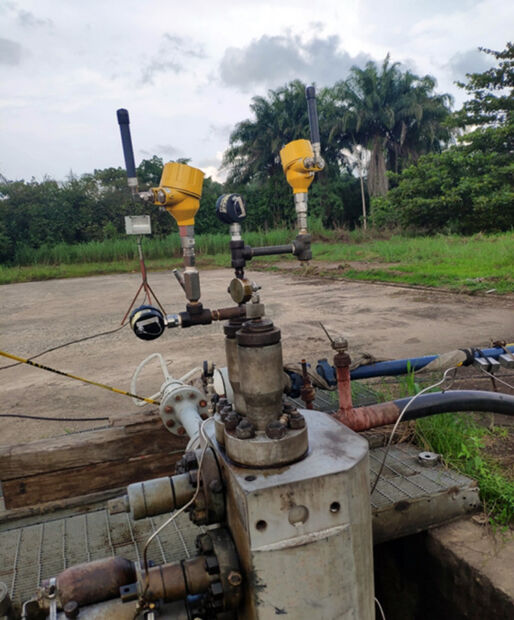Kerlink LoRaWan monitors Nigerian natural gas plant
- January 9, 2023
- Steve Rogerson

French IoT firm Kerlink has installed a LoRaWan monitoring system at a natural gas plant in Nigeria, eliminating the need for employee checking.
Built around Kerlink Wirnet iStation gateways and Srett’s Bumblebee sensors and data-management software for LoRaWans, the automated monitoring system enables the company to eliminate weekly trips by employees to 20 oil and gas wells and reduce vehicle carbon emissions by 62,400kg per year.
In addition to eliminating employee travel, the system improves the production by reducing the days the wells are shut down.
This lets the major international energy producer significantly reduce its carbon footprint and improve its operation in Nigeria.
For example, Srett’s sensors enable remote monitoring of pressure and temperature data in gas-field equipment and can alert owners and operators of changes in status or potential hazardous situations in real time. The Atex-certified, wireless, plug-and-play and battery-powered devices are designed to collect critical data, which can then be transmitted long distances over a LoRaWan coupled with a cellular backhaul, to be used by applications running on computers or mobile phones.
Wirnet iStation is a LoRaWan gateway that meets the standard requirements of public operators, MVNOs, cable operators, private businesses, public authorities, and large and small companies. Deployed around the world in smart-industry, smart-city and a wide range of other IoT projects, they even work in harsh environments. The gateways function with either long-lasting batteries or on solar power.
“Srett and Kerlink’s remote deployment of sensors and gateways on this LoRa network feeds real-time pressure information to the energy producer’s headquarters,” said Philippe Gambier, Srett VP. “This enables the customer to react immediately to problems at the site, while previously the company’s staff might not know production has stopped for days.”
Rafael Denis, Kerlink sales manager, added: “The Wirnet iStation grants high availability and performance levels that enable flexible and scalable deployments across many industries. As this deployment with Srett underscores, the customer began enjoying notable RoI within months of the installation. This is typical for Kerlink’s IoT deployments and enabled used cases.”
This large-scale implementation underscores how LoRaWan infrastructure using Srett sensors and Kerlink gateways is technically viable and cost-efficient for many kinds of use cases in Africa, in settings ranging from remote arid lands to forests.
“Remote natural gas installation in Nigeria is monitored with a LoRaWan using equipment from Srett and Kerlink,” said Gambier. “Temperature and pressure data are sent to the owner’s control room in near real time, which eliminates the need for employees to travel to remote locations to check the equipment.”
Kerlink provides end-to-end connectivity for designing, deploying and operating public and private LPWA IoT networks. Its products include industrial-grade network equipment, network core, operations and management software, value-added applications, and expert professional services, backed by R&D capabilities. More than 200,000 Kerlink installations have been rolled out with over 350 clients in 70 countries.
French firm Srett provides remote monitoring based on IoT technology. Its Bumblebee remote monitoring product offers an easy, safe and affordable option for monitoring hydrogen or hydrocarbons processes, including production, transportation and storage. Thanks to its plugin technology, deployments are carried out in a few days by the user’s staff, in potentially explosive environments. Data are instantaneously available remotely from software-as-a-service (SaaS) monitoring software, via APIs.




